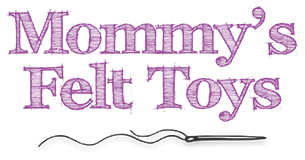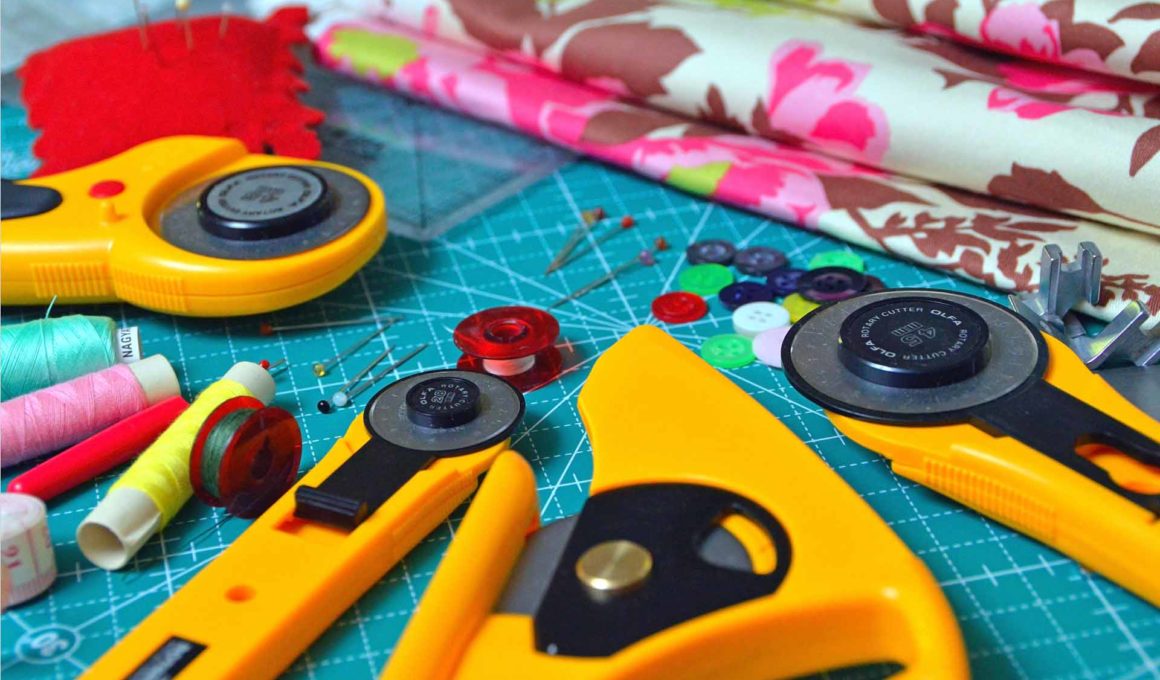Table of Contents
Do you know which felting needle to use? First of all, in the felt sewing process, you need to choose your needle according to the materials you will use. However, this simple tip makes a huge difference in the final finish of your DIY felting projects. In addition, using the right needle for each type of craft will help you get your work ready in less time, which makes your job much easier.
You’ll learn tips on which needle to use in your felting crafts with that in mind. Check out these tips to further enhance your knowledge of this fantastic universe of felt crafts!
Felt sewing needle: Which one to use?
The most commonly used needle for sewing felt is the ordinary sewing needle. This is because, regardless of the numbering, it has the thinnest point compared to other needles, especially those for embroidery. Therefore, this type of needle quickly enters the felt without damaging it.
See Also: Everything You Want to Know About Felt
I use embroidery needles when stitching felt by hand and applying wool felt. Sewing needles or spikes are comparable to embroidery needles. They have the same sharp point as the original but are slightly longer due to a more prominent eye allowing thicker threads to pass through.
Needle sizing is universal. Note that the smaller the size number, the larger the needle. Therefore, a size 6 needle is more significant than a size 10 needle.
Choose the smallest needle suitable for the thickness of your thread and with which you can sew comfortably. The smaller the needle, the less unsightly holes in your felt will be.
Best of all, standard sewing needles are very easy to find in craft shops in general, correct?
Having a basic stock of embroidery floss and polyester sewing thread on hand is helpful. So you don’t have to run to a store every time you change the felt color. To sew the felt together, you will tend to coordinate your yarn with the felt color. If you can’t find a match in colors, choose a thread color one shade darker than your felt. You can also try a contrasting shade of color to make the stitch stand out.
Hand sewing and appliqué with felt can both be done with embroidery needles. Embroidery needles are similar to sewing needles or spikes in appearance. They have a sharp tip but a more giant eye for thicker threads to pass through.
See Also: Felt Crafts for Beginners – The Complete Guide
Needle size is universal for all needles. Note that the smaller the size, the larger the needle. Therefore, a size 6 needle is more significant than a size 10 needle. Popular embroidery needle sizes used for embroidery are 7 and 9.
Choose the right size needle. Choose the smallest needle suitable for the thickness of your thread and with which you can sew comfortably. Large needles can poke holes in your felt project.
A standard needle, also known as a cutter, is a good choice for sewing felt with common sewing thread by hand.
Which Sewing Needle to Use for Felt Stitch?
Suppose you’re asking what needle to use when sewing felt. In that case, you can use an embroidery needle for embroidery floss and Perle cotton, a standard needle for sewing thread, and a medium needle for working with felt on a sewing machine.
See Also: Which Thread Is Best for Sewing Felt
For hand sewing felt, a medium-weight hand sewing needle is an excellent choice. A medium needle 70/10 or 80/12 will work nicely for regular felt when sewing it on a sewing machine. But be careful; a thicker needle can puncture. 90/14 needles are required for thicker felt or more than two layers.
Felt is a relatively thick material, so care must be taken when sewing the felt. When sewing with felt, you need to take some care to ensure you don’t break the needle or even injure yourself.
Because the fabric is thick, we recommend using a medium-weight needle and medium-weight thread or even embroidery floss. You can also use a larger needle according to the thickness of the felt. Still, I do not recommend using a thick needle as this material does not heal very well.
Sewing Needle Selection for Hand Felt Sewing
Hand sewing and felt appliqué are both possible using embroidery needles. Sewing needles or spikes are comparable to embroidery needles. They have a sharp tip but a larger eye for thicker threads to pass through.
Needle size is universal for all needles. Note that the smaller the size, the larger the needle. Therefore, a size 6 needle is more significant than a size 10 needle.
Choose the right size needle. Choose the smallest needle suitable for the thickness of your thread and with which you can sew comfortably. Large needles can leave felt holes in your project. A standard needle, also known as a cutting edge, is a good choice for sewing felt with common sewing thread by hand.
Choosing a Felt Stitch Needle with a Sewing Machine
A medium needle 70/10 or 80/12 will work nicely for regular felt when sewing it on a sewing machine. It could be necessary to use thicker felt or more than twice the number of 90/14 needles. However, be cautious because a thicker needle may leave a hole. For most felt stitching tasks, a medium needle will suffice. Sew the felt with a 70/10 or 80/12 universal machine needle.
Needle numbering for felt needle
It is essential to know that the larger the number of needles for sewing, the thinner it is, and the smaller the number, the thicker the needle. Therefore, as a general rule of thumb for using a felting needle, use a finer needle, i.e., a larger gauge needle, to finish with smaller stitches. And if you want to get larger stitches, use a thicker needle, i.e., a smaller gauge needle.
Therefore, it is ideal for needle selection to have needles of different thicknesses to suit various types of work. Take a look:
Fine sewing needle
The finer sewing needle is used when the job requires a more precise result with smaller and more delicate stitches. Therefore, the higher the needle numbering, the finer the felt yarn used should be. In addition to fine points, it is also ideal for applying felt details such as beads.
Thick sewing needle
A thicker sewing needle creates thicker stitches as a result. Therefore, it works very well when you want to give a more pronounced effect on felt with thicker lines of felt, such as yarn for crochet nearby. In addition, it is perfect for decorative sewing ribbons due to its more giant hole.
See how easy it is to choose a felting needle? Just select the needle numbering according to the type of work to be done as you accompany.
See Also: 11 Questions Every Beginner in Felt Crafts Should Ask
That’s why you should test different needle numbers and verify that they are best suited for the job you want to do. Thus, soon there will be no doubt about this essential tool for working with felt.
If you like these tips, like Mommy’s Felt Toys Youtube and Instagram pages. You won’t miss any information on felt crafts, and you can still share everything with your friends!












